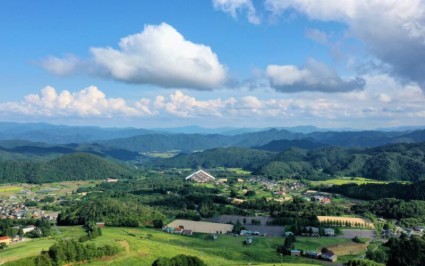The requested article has expired, and is no longer available. Any related articles, and user comments are shown below.
© Copyright 2023 The Associated Press. All rights reserved. This material may not be published, broadcast, rewritten or redistributed without permission.Nuclear watchdog ask Fukushima plant operator to assess risk from reactor damage
By MARI YAMAGUCHI TOKYO©2024 GPlusMedia Inc.
 Take our user survey and make your voice heard.
Take our user survey and make your voice heard.














26 Comments
Login to comment
Yrral
Did they consult the Chinese, Russian and North Korean
TaiwanIsNotChina
Not much point in fostering good will from declared enemies.
moonbloom
Yes of course best to foster ill will instead, that's a great approach to life and geopolitical affairs.
wallace
The situation will remain highly dangerous and critical while the melted fuel remains. The radiation levels inside the No2 reactor are 500 SIEVERTS.
It will take decades to find a solution. Another powerful earthquake and tsunami could destroy the reactors and wash them out to the sea.
Fukushima is more dangerous than Chornobyl.
1glenn
Rather than the operator assessing risk, isn't that the job of the "watchdog" at this point? The confidence of the public in the operator's ability to assess risk was destroyed when they failed to take into consideration the likelihood of a tsunami following an earthquake. Earthquakes in Japan? Never happen.
For one thing, the nuclear facility should have been located on higher ground.
1glenn
Regarding the radioactive stored water that they want to release, my understanding is that it is so little radioactive that it is safe to drink. If that is true.......
wallace
The structures were weakened by the powerful earthquake. The containment vessels were damaged. The reactor building structures were weakened. There is still spent fuel in the No1&2 cooling pools. The site could not withstand another powerful quake. It would crack open the reactors releasing a massive amount of radiation greater than it was in 2011.
lunatic
It took 3 months in Chernobyl to construct a sarcophage to contain the radiation.
You would think that after 50 years of technological advancement we would be more efficient.
look at us, after 10 years nothing has been done.
wallace
lunatic
Chernobyl and Fukushima cannot be compared. They are two very different types of nuclear disaster. Chernobyl was an explosion in the reactor which was built without a containment vessel. The first sarcophagus was just temporary. 31 people died building it. It took 206 days.
The more permanent sarcophagus took about 8 years to construct and suppose to last 100 years.
A leading Russian scientist has claimed that the sarcophagus entombing Chernobyl's broken nuclear reactor is dangerously degraded and he warned that its collapse could cause a catastrophe on the same scale as the original accident almost 20 years ago.
Fukushima were three reactor meltdowns.
A sarcophagus cannot be built to cover the site because the melted fuel requires constant cooling. There is the problem of the underground water becoming contaminated and reaching the ocean.
The nuclear disaster won't be resolved this side of 50 years or 2061.
It is not correct to say nothing has happened at Fukushima. A tremendous amount has been achieved to date given the difficulty of working at a plant destroyed by an earthquake and tsunami and having to often work remotely because of dangerous levels of radiation.
lunatic
Not a single core has been extracted yet.
Feels like they will just keep pumping water for an eternity.
I would feel safer if we can outsource de decommissioning to someone other than TEPCO.
wallace
lunatic
I presume you mean the corium or melted fuel. There are some fuel rods in the reactor vessels that have not melted. There are melted fuel rods still inside the reactor vessel. And then there are the melted fuel rods that eat through the base of the reactor vessel and dropped into the containment vessel and the suppression rings.
Some experts believe some escaped into the basements.
The radiation levels inside the reactors are about 500 SIEVERTS. Whatever goes in there, a camera or robot or other measuring device in a very short time its electronics are fried. There are about 800 tons of corium that need constant cooling with water and yes for eternity if it's not removed.
There are many companies involved with Fukushima not just TEPCO. Toshiba and Hitachi's nuclear divisions are also involved.
Do you have any idea how to remove the 800 tons of corium like keeping it underwater to prevent the release of very high levels of dangerous radiation?
The spent fuel from No1&2 must be removed first and the buildings made safer.
wallace
No one has the experience of resolving the Fukushima Nuclear Disaster because it never happened before.
wallace
I think the corium will not be able to be removed before 2050.
wallace
Sorry, I posted that in error. He was referring to the first concrete sarcophagus now replace with a new one expected to last 100 years.
wallace
The corium will probably need to cool before any attempt is made to remove it.
RKL
But of course.
wallace
RKL
Is that all you have?
wallace
The clean-up will last more than 300 years.
https://www.asahi.com/ajw/articles/14232870
There are photos of the corium
https://simplyinfo.org/tag/corium/